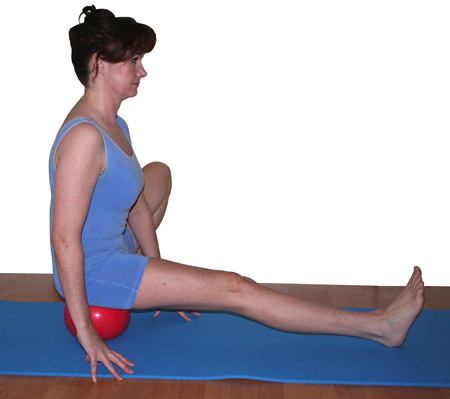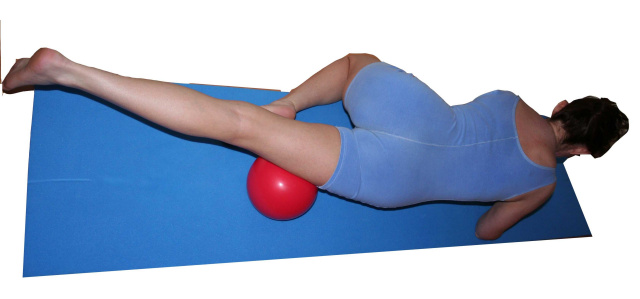THE HEALTH PROFESSIONAL COURSE SERIES
A SERIES OF 1 DAY COURSES that may be attended in ANY order
TKM™ Release methods are user friendly and can be taught to clients/patients for use at home. It is a comprehensive method geared towards teaching health professionals deeply effective techniques to impart to their patient/clients to empower them towards self-healing.
WHY SHOULD A HEALTH PROFESSIONAL LEARN TKM™ RELEASE?
- Come away with cutting edge techniques to add to services offered to your patient/clientele base
- Techniques are self applied can be taught to clients/patients for home use
- The balls are inexpensive for use anywhere
- Much more effective and specific than using the Foam Roller method
 |
 |
COURSES AVAILABLE
1. THE SUPERFICIAL BACK LINE
This myofascial chain connects the entire posterior surface of the body. The overall postural function of this sling is to support the body in full extension and to prevent the tendency to curl into a forward flexed position. Included in this chain are: short toe flexors, plantar fascia, achilles tendon, gastrocnemius, hamstrings, sacrotuberous ligament, sacrolumbar fascia, spinal erectors and the suboccipitals.
 |
 |
2. THE ARM CHAINS - SUPERFICIAL AND DEEP
- ANTERIOR ARM CHAINS - Deep & Surface: Releasing these chains often helps alleviate forward head posture, hyper-extended cervicals, excessive thoracic kyphosis and rounded shoulder postures. Includes: Pectoralis major & minor, clavipectoral fascia, biceps brachii, radial periosteum, medial intermuscular septum, flexorgroup, carpel tunnel and thenar.
- POSTERIOR ARM CHAINS - Deep & Surface: These chains are important for overall shoulder stabilization and often need rebalancing. Includes: Rhomboids, levator scapulae, trapezius, rotator cuff, deltoid, triceps, ulnar periosteum, ulnar collateral ligaments, lateral intermuscular septum, extensors & hypothenar.
3. THE SUPERFICIAL FRONT LINE
Designed to pull the front of the body up, from the top of toes to the neck this chain lifts and supports the skeletal parts that extend forward of the gravity line. This line protects the viscera that make up the ventral cavity. Includes: Toe extensors, tibialis anterior, anterior crural compartment, rectus femoris, vastii group, rectus abdominis, sternalis, sternochondral myofascia and the sternocleidomastoid.
 |
 |
4. THE ESSENTIALS - RELEASE & RESTORE
Based on TKM's five years practical teaching experience in physiotherapy clinics, this course concentrates on the muscles that most often need to be Released or Strengthened.
RELEASE: Learn basic Therapeutic Ball Release Techniques for various major muscles groups that could include but not limited to: Suboccipitals, Spinal Erectors, Feet, Pectorals, Gluteal Complex, IT Band, Quadriceps, Hamstrings, Gastrocnemius, Trapezius, Latissimus, Tricep, Bicep, Adductors, Rectus Abdominus, Thoracic Spine and SI Joint Mobilization. Therapeutic Ball Release techniques can be applied to almost any muscle in the body, even areas such as the Pelvic Floor and Massiter.
RESTORE: Balls are used to support spinous and transverse processes and the sacrum. With applied principals of neutral pelvis stabilization, strengthen the lumbo-pelvic core stabilizers and the global Deep Front Myofascial Line. Guide correct sequencing of the important deep neck flexors into cervical and thoracic flexion.
________________________________________________________________
See Upcoming Courses page
for next scheduled dates and cities
WHAT MAKES TKM™ RELEASE METHOD DIFFERENT?
BLENDED MODALITIES: The Method offers a one-of-a-kind integrative approach to achieving a full body-wide release. Release is a harmonious blend of myofascial stretches, postural re-education and imagery techniques that are adapted from several complementary methods.
Includes: Evolved Pilates, Thomas Myers - Myofascial Anatomy, Therapeutic Ball, Feldenkrais Techniques, Franklin Method and Restorative Yoga